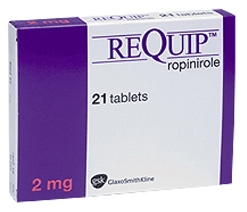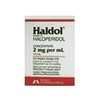Overview of Requip
Requip, generic name ropinirole, is a dopamine agonist used primarily to treat symptoms of Parkinson’s disease and moderate-to-severe Restless Legs Syndrome (RLS). It works by stimulating dopamine receptors in the brain, which helps improve movement and control of muscle spasms.
Pharmacological Classification
Ropinirole falls within the non-ergoline class of dopamine agonists. It is not related to the ergot alkaloids and has a different side effect profile compared to ergoline-derived medications.
Indications for Use
Requip is indicated for the treatment of Parkinson’s disease symptoms, including tremors, stiffness, and slowness of movement. It is also prescribed for the treatment of primary Restless Legs Syndrome.
Dosage Forms and Strengths
Requip is available in immediate-release tablets in strengths of 0.25 mg, 0.5 mg, 1 mg, 2 mg, 3 mg, 4 mg, and 5 mg. Extended-release tablets are available in strengths of 2 mg, 4 mg, 6 mg, 8 mg, and 12 mg.
Dosage and Administration
Dosages vary depending on the condition and patient response. For Parkinson’s disease, the initial dose is typically 0.25 mg three times a day, with gradual increases every week. For RLS, the starting dose is usually 0.25 mg once daily, taken 1-3 hours before bedtime. Dosing adjustments rely on therapeutic response and tolerability.
Mechanism of Action
Ropinirole acts as a selective dopamine D2 and D3 receptor agonist, lacking affinity for the D1 receptors. It stimulates the dopamine pathways in the brain, which are deficient in conditions like Parkinson’s disease.
Pharmacokinetics
Ropinirole is rapidly absorbed with maximum plasma concentrations observed within 1-2 hours post-dose. Its half-life is approximately 6 hours. Biotransformation occurs primarily via the CYP1A2 pathway, and the medication is excreted in urine.
Special Populations
In patients with renal impairment, dose adjustment of ropinirole may be necessary. Hepatic impairment can also affect the pharmacokinetics of ropinirole, requiring individualized dosing.
Drug Interactions
Ropinirole metabolism can be altered by co-administration with CYP1A2 inhibitors or inducers. Caution should be taken when used with other central nervous system depressants, as additive effects may occur.
Adverse Reactions
Common side effects of Requip include nausea, dizziness, somnolence, and dyskinesia. Orthostatic hypotension and hallucinations have also been reported. Ropinirole has been associated with impulse control disorders, such as compulsive gambling or sexual behavior.
Use in Specific Populations
Requip should be used with caution in elderly patients due to increased sensitivity to its effects and side effects. It has not been studied extensively in pregnant women or during breastfeeding. The pediatric use of ropinirole has not been established.
Overdosage
In cases of acute overdose, symptoms may include vomiting, agitation, hypotension, or respiratory depression. General supportive measures are recommended, with close monitoring for signs of CNS or respiratory depression.
Patient Counseling Information
Patients should be advised about the potential sedating effects and the risk of sudden onset of sleep. It is also important to counsel patients on the potential for hallucinations and the possibility of experiencing intense urges and inability to control these urges.
Monitoring and Laboratory Tests
Monitoring may include regular assessment of renal and hepatic function, blood pressure for orthostatic hypotension, and for signs of exacerbation of motor dysfunction or dyskinesia. Psychological assessments for impulse control disorders are also recommended.
Storage and Handling
Requip tablets should be stored at controlled room temperature, away from moisture and heat. Keep the medication in an area inaccessible to children and pets to prevent accidental ingestion.
Disposal
Expired or no longer needed Requip tablets should be disposed of following local guidelines for the disposal of medications to avoid environmental contamination and misuse.






Reviews
There are no reviews yet.